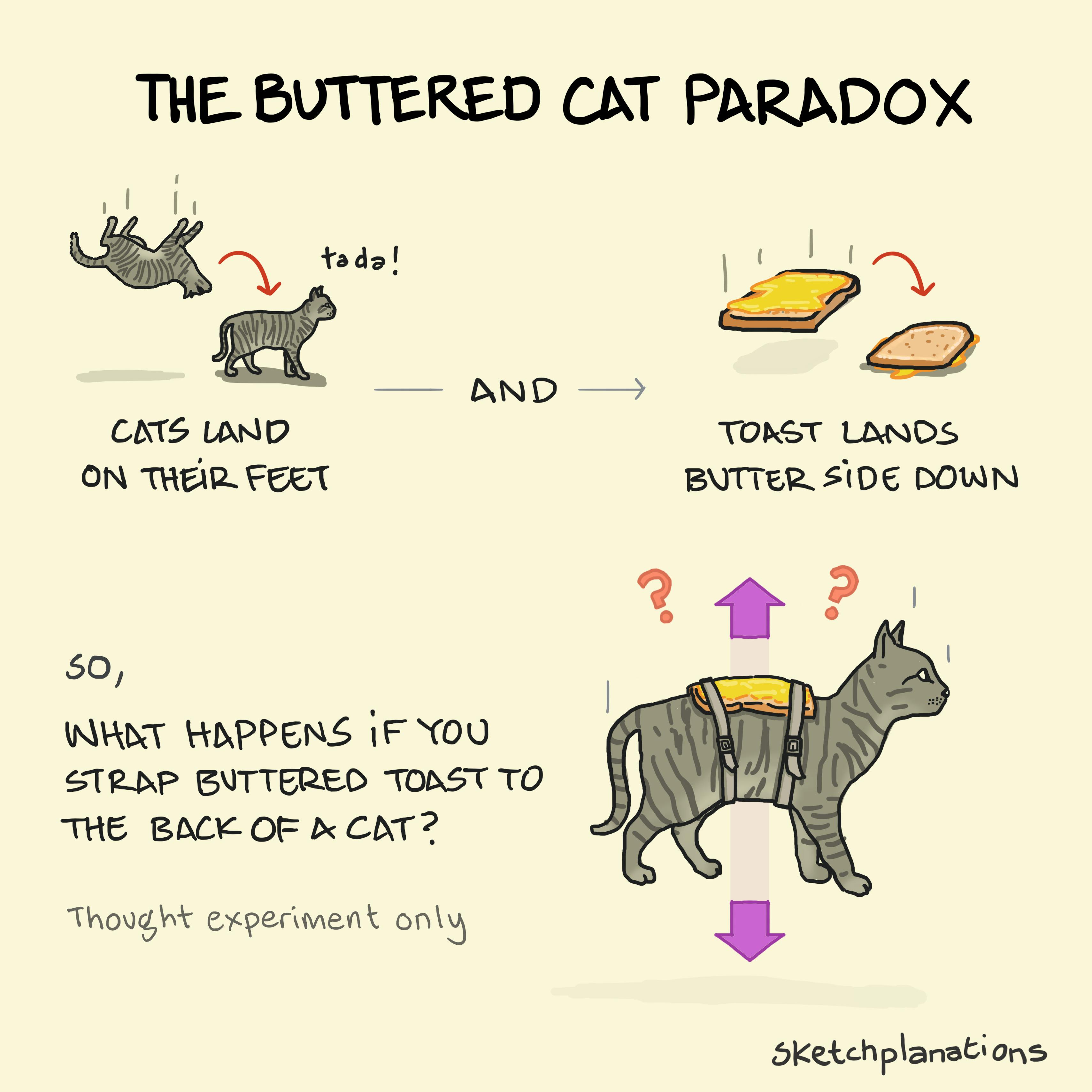The Buttered Cat Paradox

- Prints
- Copied!
👇 Get new sketches each week
The Buttered Cat Paradox goes like this:
- Cats always land on their feet
- Falling toast always lands butter side down
So what will happen if you strap buttered toast to the back of a falling cat?
Presumably, the cat righting reflex will fight against the pull of the buttered toast.
John Frazee proposed the buttered cat paradox in a July 1993 competition in Omni magazine, including a practical application based on the inevitable hovering that must result:
"When a cat is dropped, it always lands on its feet, and when toast is dropped, it always lands with the buttered side facing down. I propose to strap buttered toast to the back of a cat. The two will hover spinning, inches above the ground. With a giant buttered cat array, a high-speed monorail could easily link New York with Chicago."
The Buttered Toast Phenomenon
Incidentally, the buttered toast phenomenon—why toast always lands butter side down—was the subject of an experiment on the British TV show QED, finding that buttered toast, when thrown into the air, landed equally on the buttered and unbuttered sides. However, Robert Matthews conducted a mathematical analysis of toast falling, as it would more commonly, from the edge of a table. His work showed that landing buttered-side down is the most likely result given the height of an average table, the gravitational constant, and the typical mass of toast. It won him an Ig Nobel Prize in 1996.
Buttered toast has been falling for a long time. There's an 1884 poem by James Payn:
I never had a slice of bread,
Particularly large and wide,
That did not fall upon the floor,
And always on the buttered side!
The Cat Righting Reflex
The innate ability for cats to twist around and land on their feet is called the cat righting reflex. They can do this thanks to a very flexible spine and no collarbone.
I dropped no cats in the making of this sketch. Please don't drop cats.
Here's a print of the cat only
More paradoxes
- The coastline paradox: the length of a coastline depends on how close you measure
- The transparency paradox: the more transparent the workspace, the more privately people behave
- The paradox of choice: more choice can make it harder to choose
- The automation paradox: the better the machines get, the more we struggle when they fail
- The Abilene paradox: a group can take an action that no one thinks is good
- The liar paradox: I am lying
- The paradise paradox: the belief that moving to paradise will solve all our problems
- Jevon's paradox: Fuel efficiency gains tend to increase fuel use
Also see:
- Murphy's Law: What can go wrong, will go wrong
Learn more
This archived Scientific American article on the murphodynamics of toast gives more detail about the buttered toast phenomenon.

